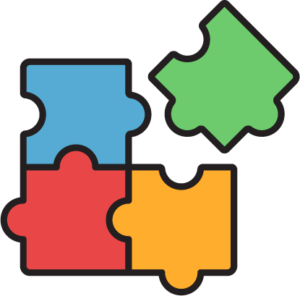
What is computational thinking?
Computational thinking is present in our everyday lives, whether we are aware of it or not. However, what does it mean? And what does it entail? Why is there so much buzz or fuss about it?
What is computational thinking? How to help and support your children in evolving and developing it, if you, yourself, do not know what it is about? The term “Computational Thinking” was first used by Jeannette Wing, Director of the Data Science Institute at Columbia University, and she defined it as:
“Computational Thinking is the thought processes involved in formulating problems and their solutions so that the solutions are represented in a form that can be effectively carried out by an information-processing agent”.
As you can see, the goal of computational thinking isn’t to make us think like robots, but to help us communicate complex problems to computers so that they can solve them. Computers, therefore, rely on the information they receive to provide solutions to the problems you have communicated.
Seen from this perspective, computational thinking combines 4 specific skills:
 The use of algorithms
The use of algorithms
 The breakdown of problems
The breakdown of problems

Pattern recognition
 Understanding abstractions
Understanding abstractions
Pattern recognition
Pattern recognition occurs naturally in children, from an early age. They can distinguish and sort blocks according to their shapes and colors (Duplo).
The use of algorithms
Concerning algorithms, they represent a set of steps that allows children to solve a problem. Let us take the example of a cooking recipe (baking). You just have to follow the instructions to bake the cake.
The decomposition
When we talk about decomposition, it is a process of breaking down a problem into several subproblems to simplify them and find solutions easily.
Abstraction
Abstraction is the most complex of computational thinking skills. When we talk of an abstract thing, it means that it exists only as an idea; it has not been materialized.
Abstraction, therefore, consists of perceiving, comparing, inferring, and verifying. It encourages the thinker to generalize before concluding.
Note that the use of a computer is not necessary to benefit from computational thinking. However, it is important to have computational thinking to program a computer and understand how machines work!
Prepare children for computational thinking
Although this definition of computational thinking is simplified, it can still be confusing. So how do we teach our children things we do not know? Good news! This is probably the best time to learn more with your children and show them that learning new skills is a lifelong process.
Indeed, nowadays, there are many applications for all ages and all levels but also fun robots that will help develop this computational thinking (see the applications and games sections on our Digital Kidz platform). By learning, even slightly, you will be able to support your children and allow them to discover new skills. Together, you will not only strengthen your bonds but also explore, educate yourselves, and navigate serenely, in this 21st century digital landscape!